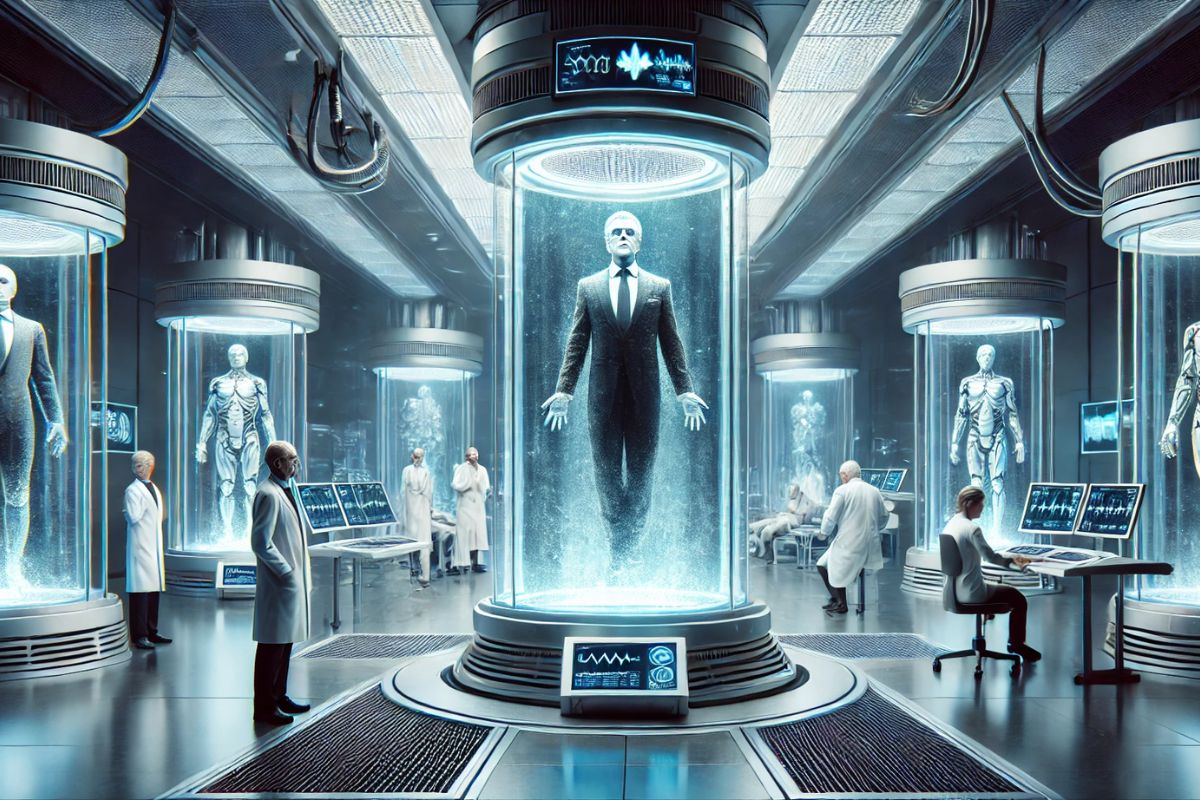Your cart is currently empty!
Cryogenics
What Is Cryogenics and What Is the Future of Cryogenics?

Cryogenics is the study of the behavior of materials at extremely low temperatures, typically below -150°C (-238°F). At these temperatures, matter behaves in unique ways, with substances changing their physical properties, such as becoming more rigid, brittle, or even superconductive. The field of cryogenics is central to numerous scientific and industrial applications, including space exploration, medical preservation, and advanced materials science. As our understanding of this fascinating science grows, the future of cryogenics promises to open up new frontiers in technology, health, and even the possibility of human preservation.
The Science Behind Cryogenics
Cryogenics involves the study of materials and biological systems at low temperatures, particularly how they respond to the cooling and freezing processes. When substances are cooled to cryogenic temperatures, atoms move more slowly, and molecular activity decreases significantly. This reduction in movement leads to some interesting effects—gases like oxygen and nitrogen become liquids, metals can exhibit superconductivity, and biological tissues can be preserved for extended periods.
To achieve cryogenic temperatures, special techniques and equipment are required, often involving the use of liquid nitrogen or liquid helium. These substances are able to reach temperatures that are far colder than what can be achieved through conventional refrigeration methods. Liquid nitrogen, for example, boils at -196°C (-321°F), while liquid helium can reach temperatures as low as -269°C (-452°F), which is just a few degrees above absolute zero (0 Kelvin or -273.15°C).
Key Applications of Cryogenics
Cryogenics has already proven essential in many sectors, both industrial and scientific. Some of the most notable applications include:
Space Exploration
Cryogenics plays a pivotal role in space exploration, particularly in the storage and transportation of fuels. Liquid hydrogen and liquid oxygen, both of which are used as rocket propellants, must be kept at extremely low temperatures to remain in liquid form. Cryogenic technology ensures that these fuels remain stable and ready for use in spacecraft engines, enabling space missions to reach outer space.
Moreover, cryogenic temperatures are also essential in space telescopes and detectors, where cooling is required to reduce thermal noise and enhance the sensitivity of instruments designed to capture faint signals from distant stars and galaxies.
Medical Applications
Cryogenics has significant potential in the field of medicine, especially in the areas of cryopreservation and cryosurgery. Cryopreservation involves the process of freezing biological tissues, cells, or organs for long-term storage, potentially allowing for future transplantation or research. Sperm, eggs, embryos, and even some tissues are preserved at cryogenic temperatures, extending their viability for future use.
Cryosurgery, another important medical application, uses cryogenic technology to freeze and destroy abnormal tissues or tumors. By applying liquid nitrogen to cancerous growths or precancerous cells, physicians can effectively target and eliminate diseased tissue with minimal damage to surrounding healthy tissue.
Superconductivity and Electronics
At cryogenic temperatures, many materials—especially metals—become superconductive, meaning they can conduct electricity without resistance. Superconductivity is of significant interest in the fields of electronics and energy transmission. Superconducting materials are already used in MRI (magnetic resonance imaging) machines and particle accelerators, where powerful magnets are required.
In the future, advancements in cryogenics could lead to more efficient energy grids, faster computers, and improvements in quantum computing, where the manipulation of quantum bits (qubits) at cryogenic temperatures is necessary for optimal performance.
Industrial Applications
In the industrial sector, cryogenics is used in several areas, including the liquefaction of gases for easier storage and transportation. Industries such as liquefied natural gas (LNG), food processing, and metal manufacturing rely on cryogenic cooling technologies. Cryogenic air separation plants, for example, are used to produce pure nitrogen, oxygen, and argon for a variety of applications, including steel production, electronics, and medical use.
The Future of Cryogenics: What Lies Ahead?
While cryogenics has already revolutionized several fields, its future potential seems even more promising, with numerous emerging technologies and ideas on the horizon. Here are some exciting developments to watch for in the coming years.
Cryonics: The Possibility of Human Preservation
One of the most controversial and speculative areas of cryogenics is cryonics, the practice of preserving human bodies (or just the brain) at cryogenic temperatures with the hope that future medical advancements may allow for revival. The idea is that by freezing a body after death, it might be possible to “reanimate” it in the future when a cure for the cause of death is discovered or when the body can be repaired at the cellular level.
Although cryonics is not yet a proven science, there has been increasing interest in the field, with several companies offering cryopreservation services to individuals seeking to preserve their bodies or brains after death. While revival from cryopreservation remains speculative, advances in cryobiology and preservation techniques could make this concept more viable in the future.
Quantum Computing
The future of computing is closely tied to cryogenics, particularly with the rise of quantum computing. Quantum computers rely on qubits, which are extremely sensitive to temperature fluctuations and need to be kept at near absolute zero to function properly. Cryogenic cooling systems are already essential to the operation of many quantum computers.
As quantum computing technology advances, we may see more widespread use of cryogenics in mainstream computing systems. The potential for quantum computing to solve complex problems in fields such as cryptography, drug discovery, and artificial intelligence could revolutionize industries worldwide.
Advances in Cryopreservation for Organ Transplantation
While organ donation and transplantation have saved countless lives, there remains a critical shortage of available organs. Cryogenics could play a vital role in solving this problem. Research into cryopreservation of organs is progressing, with scientists working to extend the viability of organs stored at cryogenic temperatures. If successful, this could lead to a world where organs could be stored for much longer periods, allowing for a more efficient transplant system and potentially saving thousands of lives.
Space Exploration and Colonization
As humanity continues to explore outer space, cryogenics will be integral to the future of space travel, particularly for long-duration missions. The ability to preserve food, medical supplies, and even astronauts themselves using cryogenic technology could be key to successful interplanetary exploration. Cryogenic sleep, often depicted in science fiction, might one day be a real option for astronauts embarking on long-term space missions to distant planets like Mars.
Additionally, as humanity looks toward the possibility of colonizing other planets, cryogenics could provide solutions to preserve resources and enable the growth of human settlements in space. Cryogenic technology will likely be essential in storing fuel, water, and other critical materials necessary for life support on distant planets.
Advancements in Cryogenic Materials and Technologies
The development of new cryogenic materials and more efficient cooling systems could unlock new applications across industries. For example, research into cryogenic energy storage could lead to more efficient and environmentally friendly batteries, while advances in cryogenic propulsion systems might lead to faster spacecraft and energy-efficient transportation methods on Earth.
Conclusion
Cryogenics is a field that continues to evolve, offering profound possibilities in science, technology, medicine, and even space exploration. From preserving human cells and organs to enabling breakthroughs in quantum computing, the future of cryogenics is full of promise. While challenges remain, especially in areas like cryonics and the preservation of organs, ongoing research and innovation may pave the way for significant advancements that could reshape the way we live, work, and travel. Cryogenics stands at the intersection of imagination and science, and the next few decades could reveal exciting, transformative possibilities that were once the realm of science fiction.

